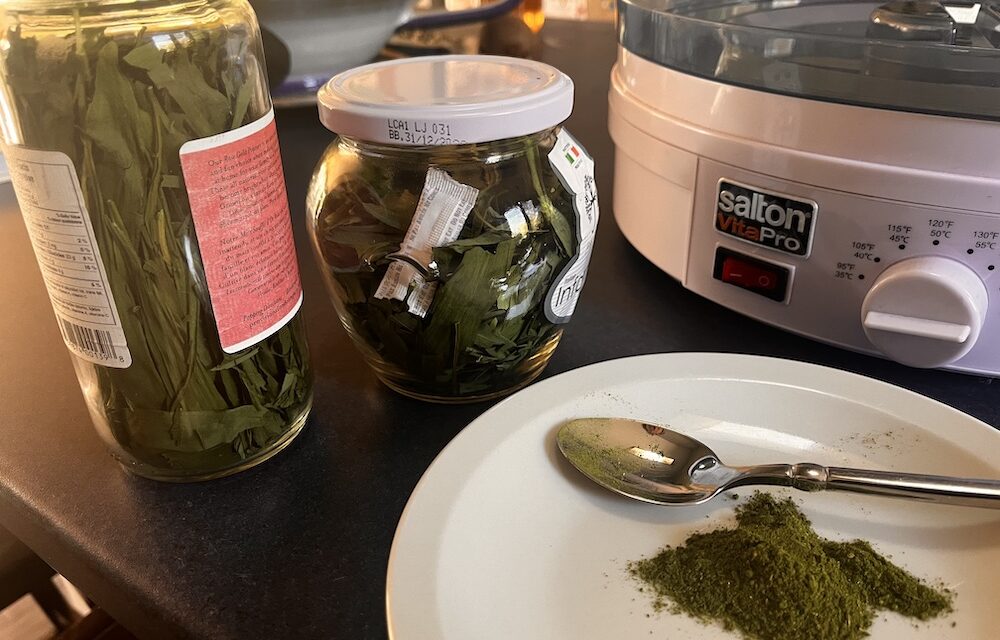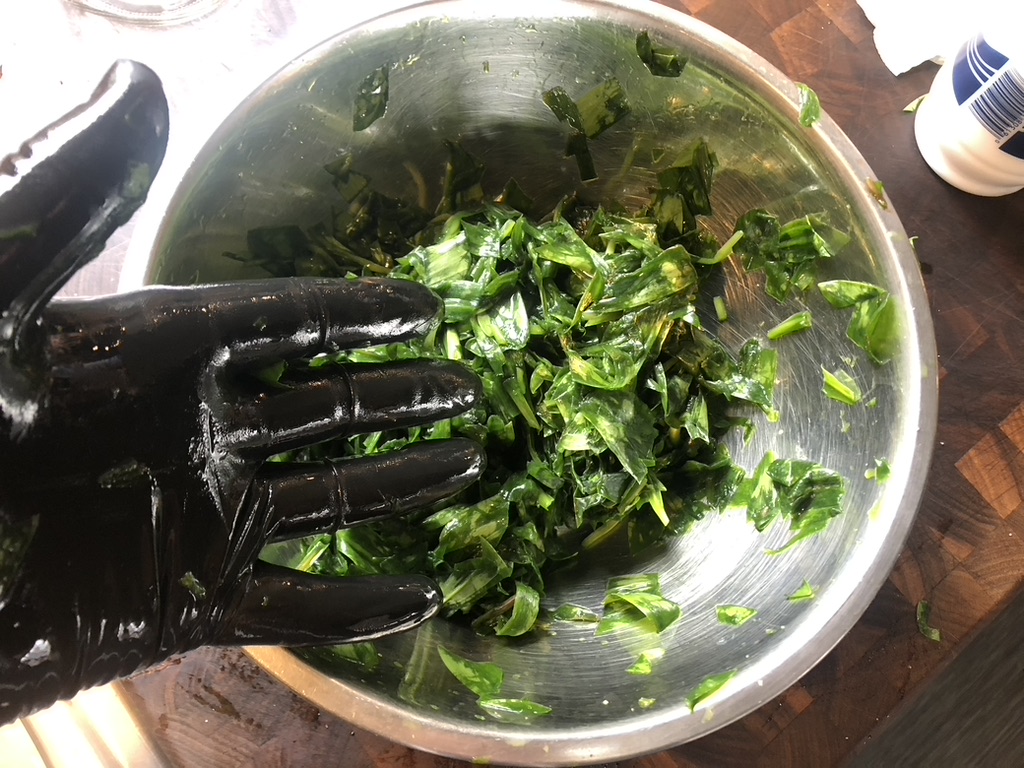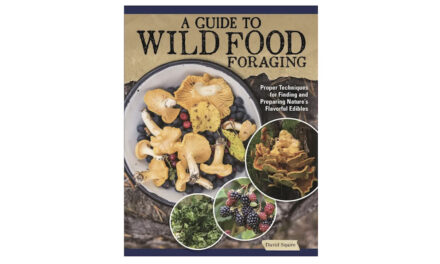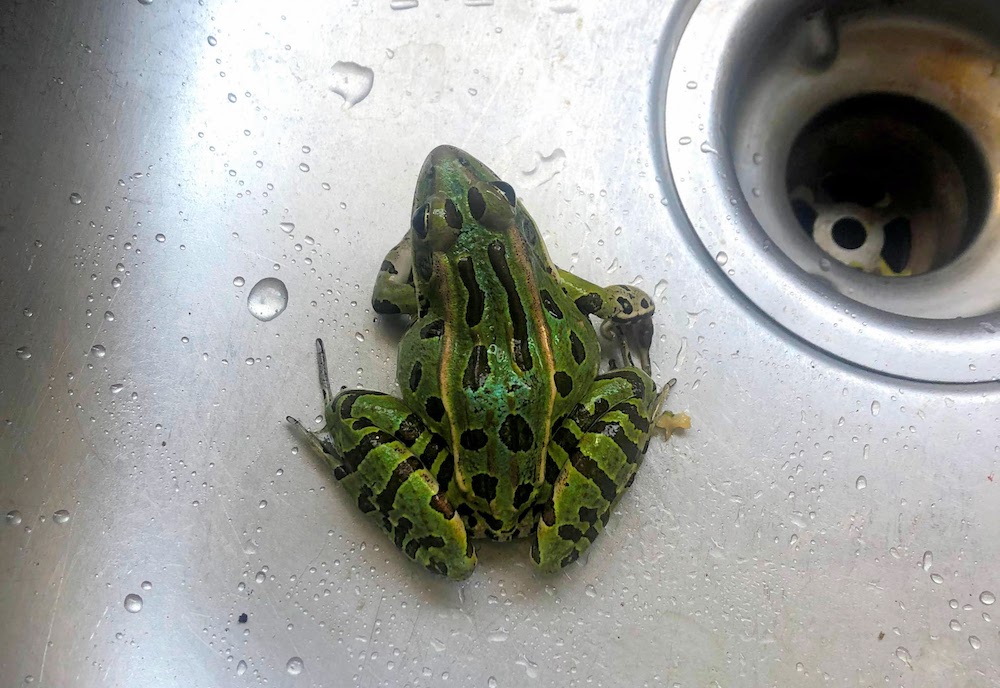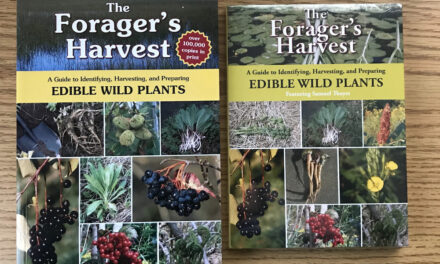I’ve covered the glorious seasonal treats that are ramps previously for this column, and last year I thought I’d step it up a little regarding their preparation by experimenting with Tjeremsha, AKA Siberian-style fermented ramp leaves, a recipe from The Forager Chef’s Book of Flora by Alan Bergo.
Having been busier than usual over the past few weeks, I’ve been extremely negligent with my spring foraging, desperately grabbing the very last of the season’s ramps yesterday and missing out on fiddleheads entirely this year.
I’m always looking for new methods of preserving the unique flavours of ramps, and last year I messed around with dehydrating ramps and combining them with other spices to make a pungent rub. So last night, I dug out the dehydrator from the basement and got to work.

The very last of the season’s ramps: Later in their brief season, I find ramps’ thiols to be much more prominent, making them incredibly piquant, so much so that they’d possibly scare a less experienced ramp eater. The sweetness that one finds at the start of the season has gone, and a pleasant bitterness develops, although again, this isn’t for everyone. One will find a lot more pink stalks too. As always, I only ever pick the leaves as opposed to the whole plant, leaving the bulb, as this makes for a more sustainable harvest and management of your ramp patch. Wash them well, as who knows what’s been piddling on them?

Shake off any excess water, although don’t worry too much as any decent dehydrator will make short work (well, six hours or more) of any lingering moisture. Many people suggest cutting the leaves into more manageable pieces, but I’ve found this makes little difference. Just be sure to check for any errant leaves poking out of the dehydrator trays, as even a little residual moisture could be the death of your dried and jarred leaves. I leave the leaves in here overnight, around six to eight hours, at 160 degrees Fahrenheit (70 degrees Celsius). Your house will reek of ramps, but I rather enjoy that smell.

So you’ll awake to a kitchen or home full of wild ramp aromatics. Fantastic. As you go through the trays of the dehydrator, be sure to check for any still damp leaves, as one of those could really mess things up. Sometimes I simply jar them like this, crumbling them into soups, stocks, and sauces. They keep incredibly well; I just tasted last year’s batch, and they are still full of flavour. Alternatively, one can make them into a terrific rub.
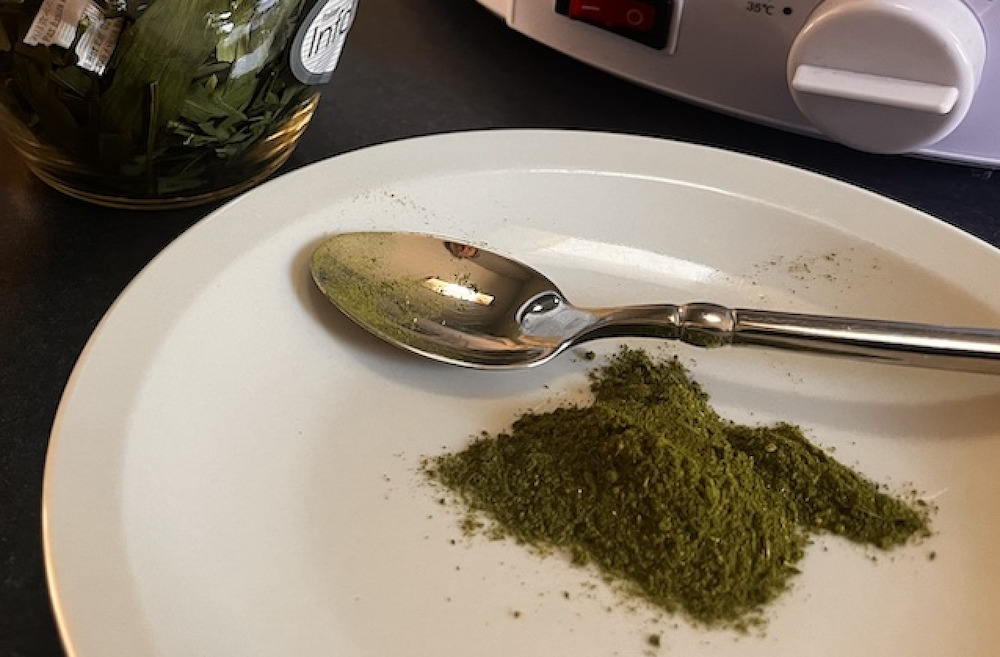
Now we all know that we are supposed to refresh our spice cupboard every 12 months or so, right? Well, I forget this on an almost annual basis; however, this recipe allows me to use up much of the past-their-best spices I have hanging around. Even if the additional spices are a little muted with age, they add wonderful base notes to this rub, with ramps being the dominant aromatic by far as long as you make them about 50% of the blend. Simply take the dried leaves, pop them in a spice blender or coffee grinder, and whizz them separately so you are astutely aware of the final volume of powdered ramps. Then augment with healthy amounts of any or all of the following: garlic powder, onion powder, cumin, coriander seeds, black pepper, white pepper, paprika, oregano, thyme, and rosemary. It’s really up to you. I usually get a little heavy-handed and simply dump out all my old spices, leaving me with a lovely, clean spice cupboard ready to be restocked with fresh spices. Whizz it up until it’s a fine powder and jar it. I quite often use the desiccant packs from supplements to ensure everything in the jar stays nice and dry. I’m thinking people will be getting little jars of this stuff as gifts over the coming weeks. Different recipes will lend themselves to different applications according to taste, but I enjoy this rub on most grilled meats and vegetables or mixed into mashed potatoes. It’s a little too flavourful for more delicate fish, but again, this depends upon what you added to the mix.

